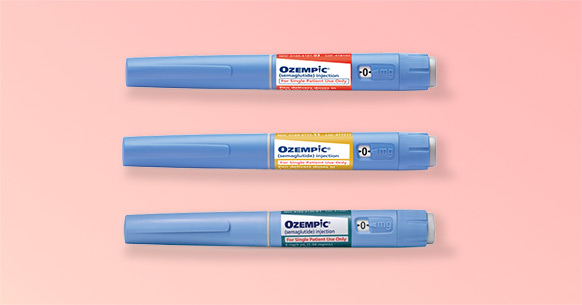
Key Takeaways
- Semaglutide pens are built to deliver fixed, full doses and lack any mechanism for safely measuring or administering partial amounts.
- Splitting doses is not sterile and can introduce harmful bacteria into the medication, increasing the risk of infection.
- Improper dosing from pen splitting can intensify side effects like nausea and vomiting, and has contributed to a significant rise in poison control calls.
- Dosage mistakes from pen splitting have led to both overdoses and underdoses, resulting in safety concerns and treatment failures.
- Altering the prescribed dose schedule can reduce the medication’s effectiveness, slowing down expected weight loss results.
- The FDA and drug maker warn against splitting doses, and insurance plans do not cover semaglutide when used outside its approved form.
Semaglutide boasts impressive weight loss results—up to 15% in a year and a half—but it also comes with a long list of gastrointestinal side effects and a high monthly cost.
In an effort to manage side effects and keep costs low, some users are splitting semaglutide pens. But, is dividing Wegovy® doses recommended, let alone safe?
The short answer is no. For the longer answer—along with safer ways to save on semaglutide—read on.
Can You Split Semaglutide Pens?
You should not split semaglutide pens, even if you can find a way to do so. Both Wegovy® and Ozempic® come in pre-filled pens that contain precise amounts of the medication. Neither version of the semaglutide pen is designed for splitting.
Here’s a quick look at how semaglutide injections work.
Wegovy
Each Wegovy® pen contains a single dose of the medication. It is designed to be injected all at once, once a week.
With each weekly injection, you’ll pull off the cap to expose the needle inside the pen. Then, you’ll apply the injector to your skin, and press down until you hear a click, which signals that the injection has started. You’ll keep applying pressure until the yellow bar on the pen stops moving (this takes about 5-10 seconds).
Ozempic
Each Ozempic® pen contains multiple doses of the medication—specifically, a month’s worth of four weekly doses.
With each weekly injection, you’ll attach a new needle to your semaglutide pen and dial to select your dose. Then you’ll insert the needle into your skin and press down on the dose button until you see a 0 in the pen’s dose counter. You’ll keep pressing down and count for an extra 6 seconds to ensure you deliver your dose of Ozempic®.
Semaglutide pens deliver doses of 0.25 milligrams (mg), 0.5 mg, 1 mg, 1.7 mg, 2 mg, and 2.4 mg, depending on which brand-name drug you are using. With the Wegovy pen’s design, there is no way to measure out “half-doses” in between these amounts. All you can see as you press down on the pen is a yellow progress bar moving. With the Ozempic pen, you can see a number changing from your selected dose to 0, but it’s still not designed to make it easy to measure out a true “half-dose.”
With compounded semaglutide, measuring out micro doses may be just as challenging, depending on the vial’s design and the specific syringe you’re using. And, doctors themselves don’t generally recommend splitting semaglutide doses, despite what online influencers may have you believe.
But the practical difficulty of dividing doses isn’t the only reason you shouldn’t do it. There are a number of reasons why splitting semaglutide pens is risky.
5 Reasons Why Splitting Semaglutide Pens Is Risky
Search YouTube or Reddit for “split semaglutide pens” and you’ll encounter plenty of people sharing their tips for how to divide Wegovy® doses or Ozempic® into smaller doses. But there are serious risks to splitting semaglutide doses.
1. It’s Not Sterile
This is probably the biggest argument against splitting semaglutide pens: it’s not sterile. Whatever method you use, splitting up your doses can lead to contamination and possible infection.
On Reddit, some users describe splitting their dose by injecting it into a vial, and then using a separate insulin syringe to draw out their dose when they’re ready to inject it. Because they’re using a sterile needle and syringe, it may feel safer—but that doesn’t mean it is. Any time you mess with the design of a semaglutide pen, you create an opportunity for bacteria to enter the medication and cause an infection.
2. It Introduces Room for Error
Semaglutide pens are manufactured to deliver precise doses of the medication, whether you use the single-dose Wegovy® pen or a multi-dose Ozempic® pen. Each pen contains exactly the amount you need, and is designed to make it super simple to deliver an accurate dose.
Attempting to split up your semaglutide dose creates a lot of room for error. If you’re injecting it into a vial, it becomes more difficult to extract the full dose later on, which may leave you with less than your prescribed dosage.
More importantly, however, there are several case reports from people who incorrectly drew their dose—leading them to accidentally overdose on semaglutide. On the other hand, research shows that using the pens as directed is safe, effective, and leaves little room for error.
3. It Can Increase Your Risk of Side Effects
When taken as directed, semaglutide can cause side effects like nausea, vomiting, diarrhea, constipation, and stomach pain. When not taken as directed—for example, splitting your dose—the risk of side effects increases, including the risk of serious side effects.
Last year, America’s Poison Control Centers reported a 1,500% increase in calls related to semaglutide dosing errors. Splitting semaglutide pens can lead to dosing mistakes that lead to inaccurate doses or even overdose. These dosing errors can significantly worsen side effects, and in some cases, may land you in the hospital.
Usually, extreme side effects like nausea and vomiting can be treated with medication and IV fluids, but who wants to go to the hospital to find that out for themselves?
4. It Can Slow Your Weight Loss Results
Semaglutide has a half-life of about 7 days—that is, it takes about a week for the amount in your body to drop by half—which is why it’s meant to be injected once a week. Taking your semaglutide dose as directed—once a week, on the same day each week—ensures that you maintain a steady amount of semaglutide in your system. This dosing schedule enables the medication to be as effective as possible, while keeping side effects manageable.
When you mess with the schedule and split up your dose, it can slow your weight loss results. Semaglutide has a dose-dependent effect. That means that higher doses produce bigger results. In clinical trials, people who took lower doses of semaglutide lost less weight than those who took higher doses.
5. It’s Not Recommended by Either the FDA or the Drug Maker
Both the US Food and Drug Administration (FDA) and Novo Nordisk, the maker of Wegovy® and Ozempic®, have warned against splitting semaglutide doses exactly for the reasons we’ve outlined above: it’s not sterile, it introduces too much room for error, and it can increase the risk of side effects.
Both the FDA and the drug maker strongly recommend taking semaglutide as directed, which means taking your full dose once a week, on the same day each week. Dividing up your dose is untested and unproven. Worse, it can lead to serious side effects, increase your risk of infection, and slow down your weight loss journey.
Will Insurance Cover Split Doses of Semaglutide?
No, insurance generally will not cover split doses of semaglutide. Insurance plans typically only cover medication when it is taken as described in its FDA-approved form. That means that divided doses of Wegovy® or Ozempic® are not covered.
It’s also worth noting that Novo Nordisk’s safety guarantee only applies when semaglutide is used as directed. So, you may not have a legal case if you do get sick or experience side effects from splitting semaglutide doses.
Safer Ways to Save on Semaglutide
Some people look into splitting semaglutide doses as a way to save on semaglutide. This makes sense, given the drug’s high monthly costs: a shocking $997.58 in the case of Ozempic®, and an even higher $1,349.02 in the case of Wegovy®. But, there are safer ways to save on semaglutide.
Compounded Semaglutide
Compounded semaglutide can be a cheaper alternative to semaglutide, if you and your healthcare provider agree that it’s a good fit for you.
Compounded medications are not approved or evaluated for safety, efficacy, or quality by the FDA, but they are legally allowed to be sold and can be more affordable than brand-name medications. When considering a compounded medication, make sure that it comes from a provider that works exclusively with licensed US pharmacies, such as us, here at SkinnyRx.
Manufacturer Savings Programs
Novo Nordisk, the maker of Ozempic® and Wegovy®, offers savings programs for both medications.
You’ll have to meet some eligibility requirements in order to qualify—such as taking the medication for a FDA-approved indication and not being on Medicare. But if you do qualify, these programs can significantly reduce the cost of your monthly Rx.
Semaglutide Coupons
If you don't qualify for either savings program, you can still save on the cost of semaglutide with a pharmacy discount card. These cards are free to download from websites like GoodRx, SingleCare, Optum Perks, and others.
Depending on the website and the pharmacy you use, these semaglutide coupons can save you up to 19% off the cost of Wegovy®, according to GoodRx. The cards can only be used if you are paying cash for your prescription.
Alternative Medications
Finally, if you were interested in splitting doses as a way to manage side effects, there’s a safer workaround. Your healthcare provider can lower your dosage to one that is more manageable for you.
If you still experience side effects on semaglutide, it might be time to consider an alternative GLP-1 medication like tirzepatide (Zepbound, Mounjaro) or liraglutide (Saxenda, Victoza).
Bottom Line: Should You Split Semaglutide Pens?
By now, you hopefully agree that the answer to that question is no. The list of Wegovy® and Ozempic® pen splitting risks is a long one, from inaccurate dosing to potential infection and side effects. Plus, there are better options:
- If you’re splitting doses because the side effects are intolerable, talk to your healthcare provider. They can adjust your dosage more slowly or recommend an alternative medication.
- If you’re splitting doses to lower your costs, there are safer ways to save on semaglutide. You can use pharmacy coupons or manufacturer savings cards, or ask your healthcare provider about compounded semaglutide.
To get the best results on semaglutide, take it as directed: your entire prescribed dose, once a week. Dividing your dose is untested, unproven, and may not get you the weight loss results you want.


 Medically Reviewed
Medically Reviewed
